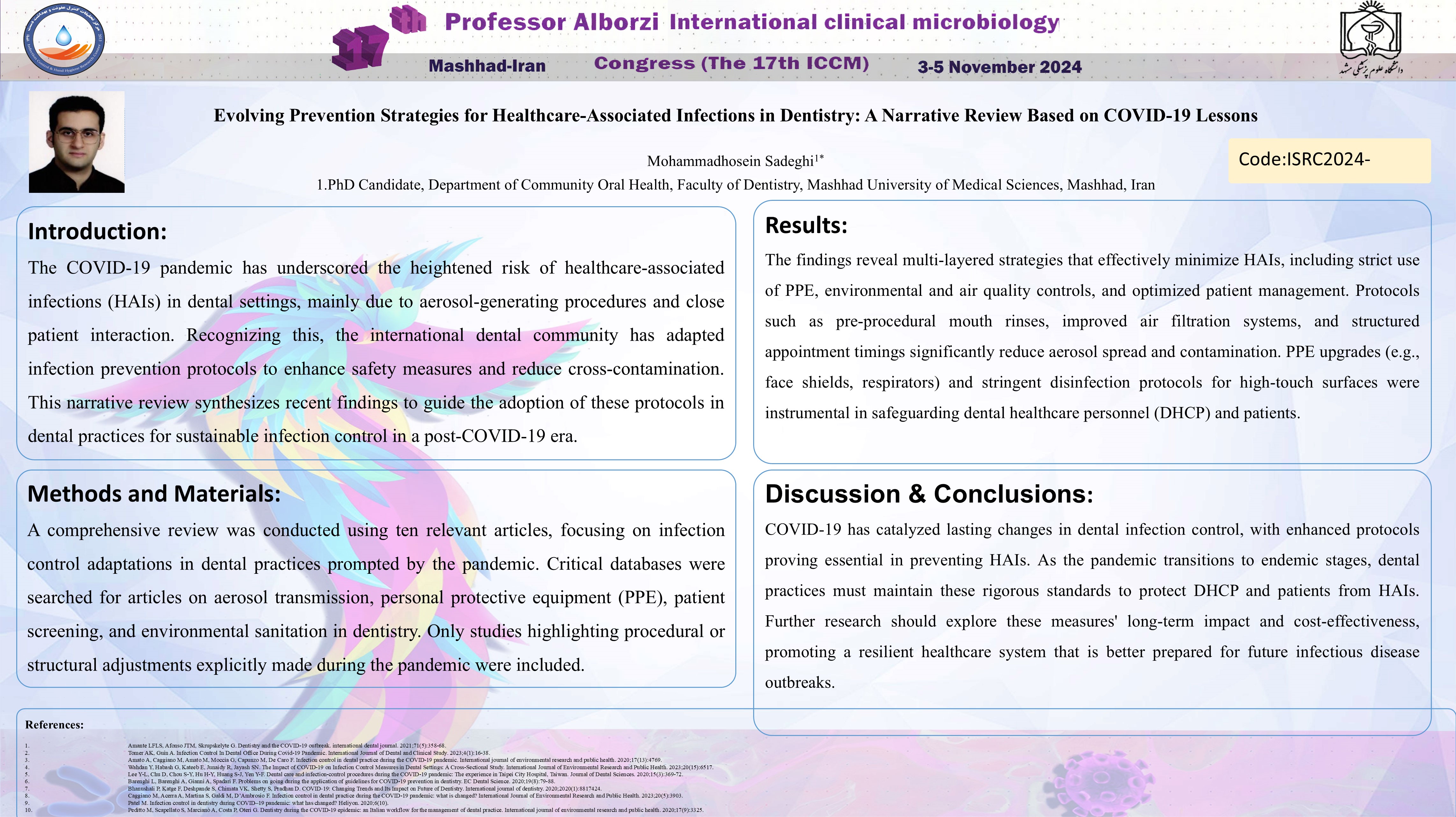استراتژی های پیشگیرانه نوین برای عفونت های مرتبط با مراقبت های بهداشتی در دندانپزشکی: یک مطالعه مروری روایتی بر اساس درس های برگرفته از پاندمی COVID-19
کد: G-1237
نویسندگان: محمدحسین صادقی © ℗
زمان بندی: زمان بندی نشده!
دانلود: دانلود پوستر
خلاصه مقاله:
خلاصه مقاله
Introduction: The COVID-19 pandemic has underscored the heightened risk of healthcare-associated infections (HAIs) in dental settings, mainly due to aerosol-generating procedures and close patient interaction. Recognizing this, the international dental community has adapted infection prevention protocols to enhance safety measures and reduce cross-contamination. This narrative review synthesizes recent findings to guide the adoption of these protocols in dental practices for sustainable infection control in a post-COVID-19 era. Methods: A comprehensive review was conducted using ten relevant articles, focusing on infection control adaptations in dental practices prompted by the pandemic. Critical databases were searched for articles on aerosol transmission, personal protective equipment (PPE), patient screening, and environmental sanitation in dentistry. Only studies highlighting procedural or structural adjustments explicitly made during the pandemic were included. Results: The findings reveal multi-layered strategies that effectively minimize HAIs, including strict use of PPE, environmental and air quality controls, and optimized patient management. Protocols such as pre-procedural mouth rinses, improved air filtration systems, and structured appointment timings significantly reduce aerosol spread and contamination. PPE upgrades (e.g., face shields, respirators) and stringent disinfection protocols for high-touch surfaces were instrumental in safeguarding dental healthcare personnel (DHCP) and patients. Conclusion: COVID-19 has catalyzed lasting changes in dental infection control, with enhanced protocols proving essential in preventing HAIs. As the pandemic transitions to endemic stages, dental practices must maintain these rigorous standards to protect DHCP and patients from HAIs. Further research should explore these measures' long-term impact and cost-effectiveness, promoting a resilient healthcare system that is better prepared for future infectious disease outbreaks.
کلمات کلیدی
COVID-19, Healthcare-Associated Infections, Infection Control, Dentistry, Aerosol Transmission, Personal Protective Equipment, Cross-Contamination, Dental Practice
